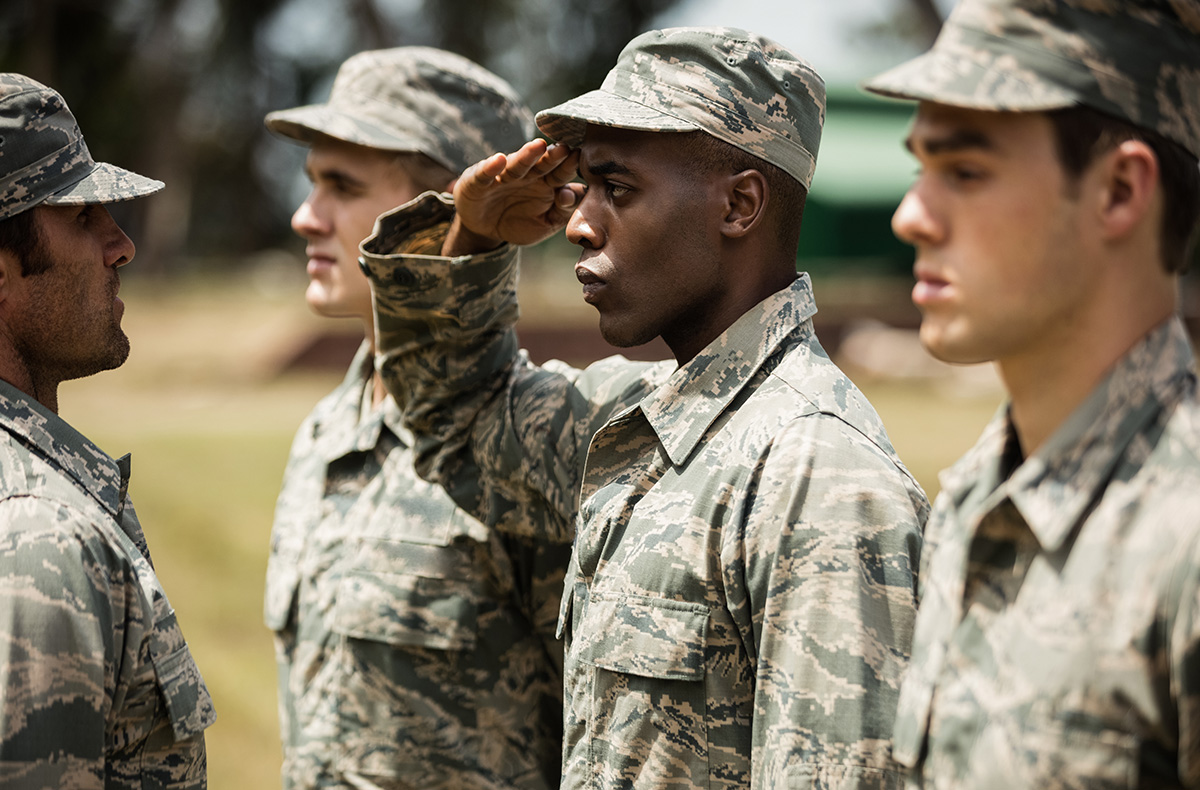“Attention!” Any recruit who has survived the first few days of boot camp has already been made well aware of the extreme importance of language in the military. The armed forces, and the US Army in particular, is packed with acronyms, rank names, and other terms that absolutely must be learned on the double. Your hat, for example, is not your hat. It’s your head covering. Your M16 is not your gun, but rather your weapon. And If you are issued a command in Basic and you don’t reply with an enthusiastic “Yes, Drill Sergeant!”, then you’re probably about to drop down for some push-ups.
Even those who don’t serve in the military are likely somewhat familiar with (and also somewhat confused by) some standard Army terms and ranks. Most of us know that a private is at the bottom and a general at the top, but what about all those other ranks like lieutenant and colonel? And why in the world are they all so hard to spell?
In this article, we’re going to run through the general hierarchy of ranks and shed a little light on why they have the names they do. Keep in mind that this is not an exhaustive list, as there are a myriad of subdivisions, warrant officers, specialists, etc., but rather a look at some “major” ones with an important linguistic history. Now that we’ve got that in order – Charge!
US Army Ranks
Private
These men and women are at the very bottom of the chain of command, as private is the most common rank for new recruits with no prior military experience. The term “private” comes from the Latin word privatus, and in the military sense “private” here doesn’t mean secretive, but rather “not public,” as in not one of the public-facing noble ranks and titles with a bit more prestige.
Sergeant
Sergeant is one of those ranks that the civilian population is usually a bit confused about, but a look at the etymology and its roots in the Old French word sergent, meaning “servant,” provides a reminder that this rank is still towards the lower end of the overall hierarchy. This seems a bit counterintuitive to the general public because films usually depict the sergeants as the grizzled, hard-nosed authoritarians screaming out orders, but the only ones they’d typically be berating are the privates.
Lieutenant
The next step up is the lieutenant, a word which also comes to us from French and quite literally means “placeholder.” This position was originally used to refer to someone who was standing in for a higher-ranking officer, so they were literally lieu (place) tenant (holding). It maintains a similar meaning, as first and second lieutenants are still considered junior officers. English speakers can remember this rank as the junior officer serving “in lieu” of a higher-ranking officer.
Captain
Now we are getting into the higher-ranking officers, and the first to appear is the aptly-named captain, which comes to us from the Latin word for “head” – caput. As the “head,” the captain is a commissioned officer in command of a company. Each division is different, but a company usually consists of roughly 100 – 200 soldiers.
Major
Here we employ another Latin word – major– meaning “larger” or “greater.” In the US Army, a major is a senior field officer, typically responsible for commanding a platoon, a unit that is indeed “larger” than a standard company. Most platoons are in fact made up of four companies, so the responsibility is four times “greater.”
Colonel
This is a very high rank and an absolute nightmare to spell/pronounce for the unacquainted. To start, in the US it is pronounced like the word “kernel.” This pronunciation with the “r” sound comes from the days when the English spelling followed the French coronel. Later, however, “colonel’s” spelling underwent additional changes due to the influence of the Italian word colonello, meaning “column officer.” So in today’s world, the word is pronounced similarly to the French coronel, but spelled more like the Italian colonello. Quite confusing, but if you can rise all the way to one step below general, you are probably good at dealing with problems like this.
General
Our final rank of General comes from the Latin word generalis, which means “pertaining to all” or “universal.” That means this man or woman is in charge of all of it, or at least a significant corner of the military universe. This is the highest ranking officer and can range from one-star up to five-star generals. It should be noted, however, that the US President still ranks higher, as Commander in Chief of the Armed Forces.
Debriefing
So there we have it, from the lowly privates all the way up to the 5-star generals, the US Army ranks can seem as perplexing as a field manual written in Russian. With a little linguistic insight and lessons from history, however, you’ll be navigating the military hierarchy with ease. Dismissed!


